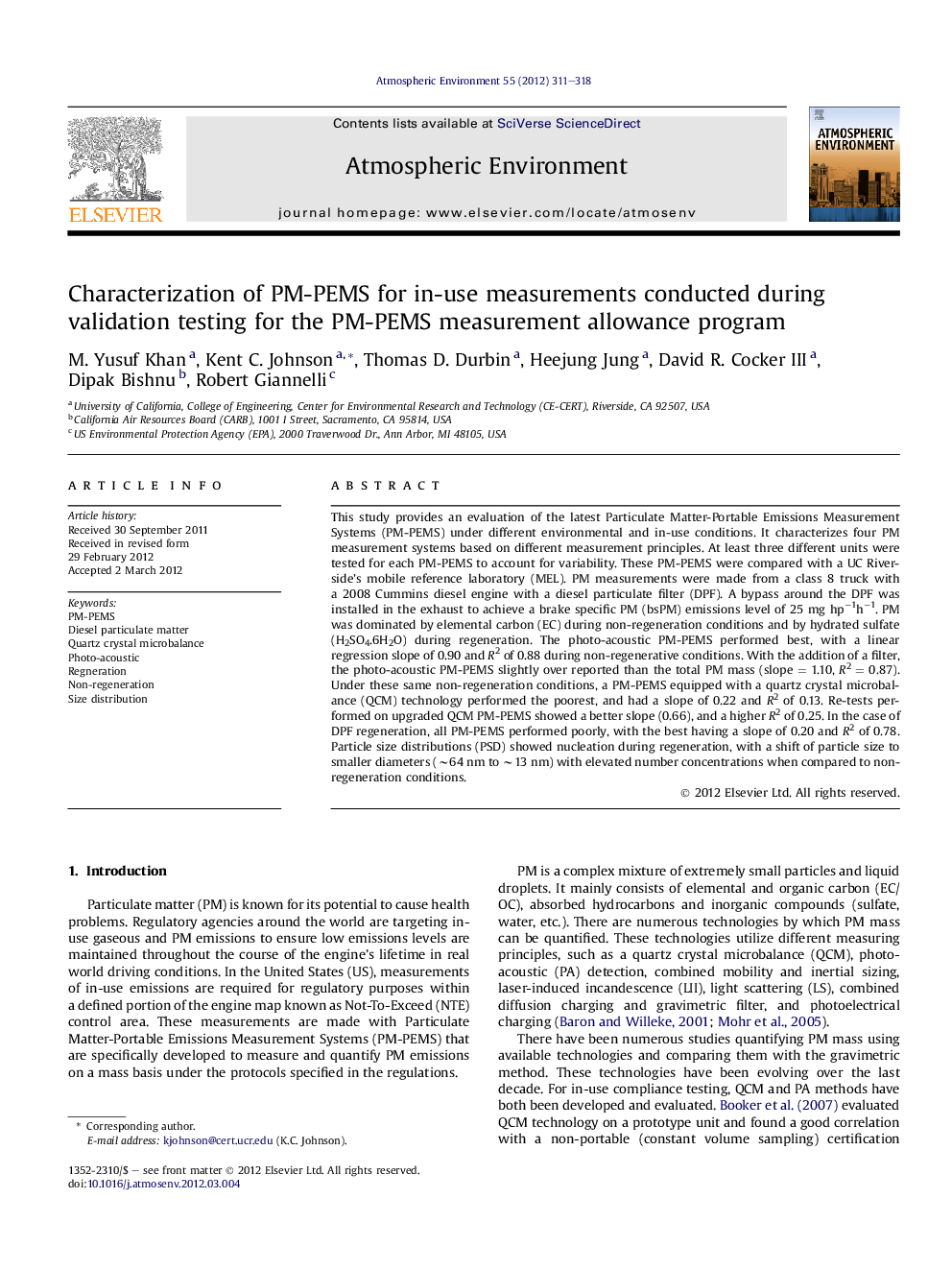| کد مقاله | کد نشریه | سال انتشار | مقاله انگلیسی | نسخه تمام متن |
|---|---|---|---|---|
| 4438951 | 1620416 | 2012 | 8 صفحه PDF | دانلود رایگان |

This study provides an evaluation of the latest Particulate Matter-Portable Emissions Measurement Systems (PM-PEMS) under different environmental and in-use conditions. It characterizes four PM measurement systems based on different measurement principles. At least three different units were tested for each PM-PEMS to account for variability. These PM-PEMS were compared with a UC Riverside's mobile reference laboratory (MEL). PM measurements were made from a class 8 truck with a 2008 Cummins diesel engine with a diesel particulate filter (DPF). A bypass around the DPF was installed in the exhaust to achieve a brake specific PM (bsPM) emissions level of 25 mg hp−1h−1. PM was dominated by elemental carbon (EC) during non-regeneration conditions and by hydrated sulfate (H2SO4.6H2O) during regeneration. The photo-acoustic PM-PEMS performed best, with a linear regression slope of 0.90 and R2 of 0.88 during non-regenerative conditions. With the addition of a filter, the photo-acoustic PM-PEMS slightly over reported than the total PM mass (slope = 1.10, R2 = 0.87). Under these same non-regeneration conditions, a PM-PEMS equipped with a quartz crystal microbalance (QCM) technology performed the poorest, and had a slope of 0.22 and R2 of 0.13. Re-tests performed on upgraded QCM PM-PEMS showed a better slope (0.66), and a higher R2 of 0.25. In the case of DPF regeneration, all PM-PEMS performed poorly, with the best having a slope of 0.20 and R2 of 0.78. Particle size distributions (PSD) showed nucleation during regeneration, with a shift of particle size to smaller diameters (∼64 nm to ∼13 nm) with elevated number concentrations when compared to non-regeneration conditions.
► Latest PM-PEMS were evaluated for in-use driving conditions.
► All PM-PEMS showed a negative biased measurement relative to the reference method.
► Photo-acoustic PM-PEMS performed best for non-regeneration conditions.
► None of the PM-PEMS performed well for regeneration conditions.
► Good consistency was observed between different units of same PM-PEMS.
Journal: Atmospheric Environment - Volume 55, August 2012, Pages 311–318